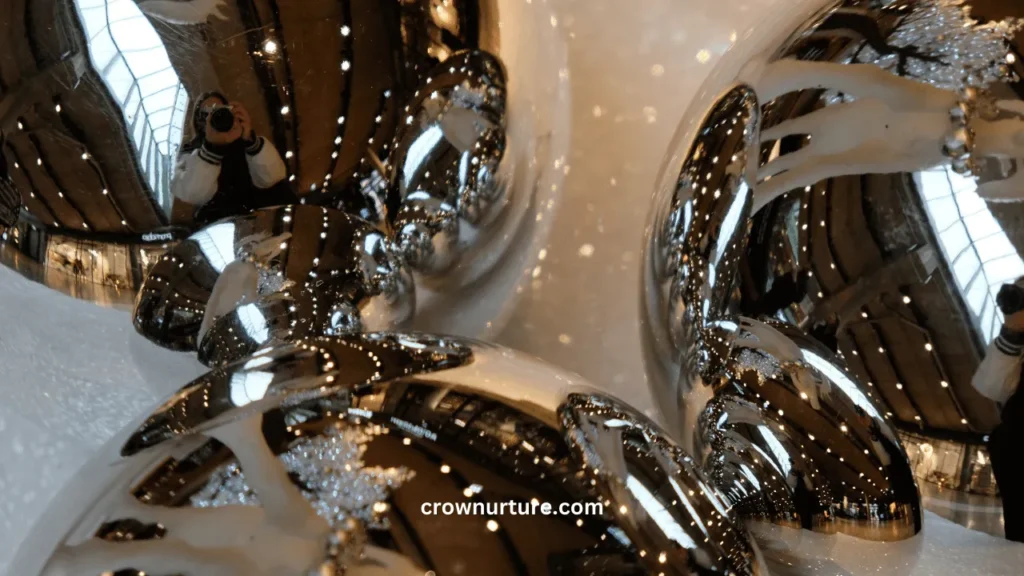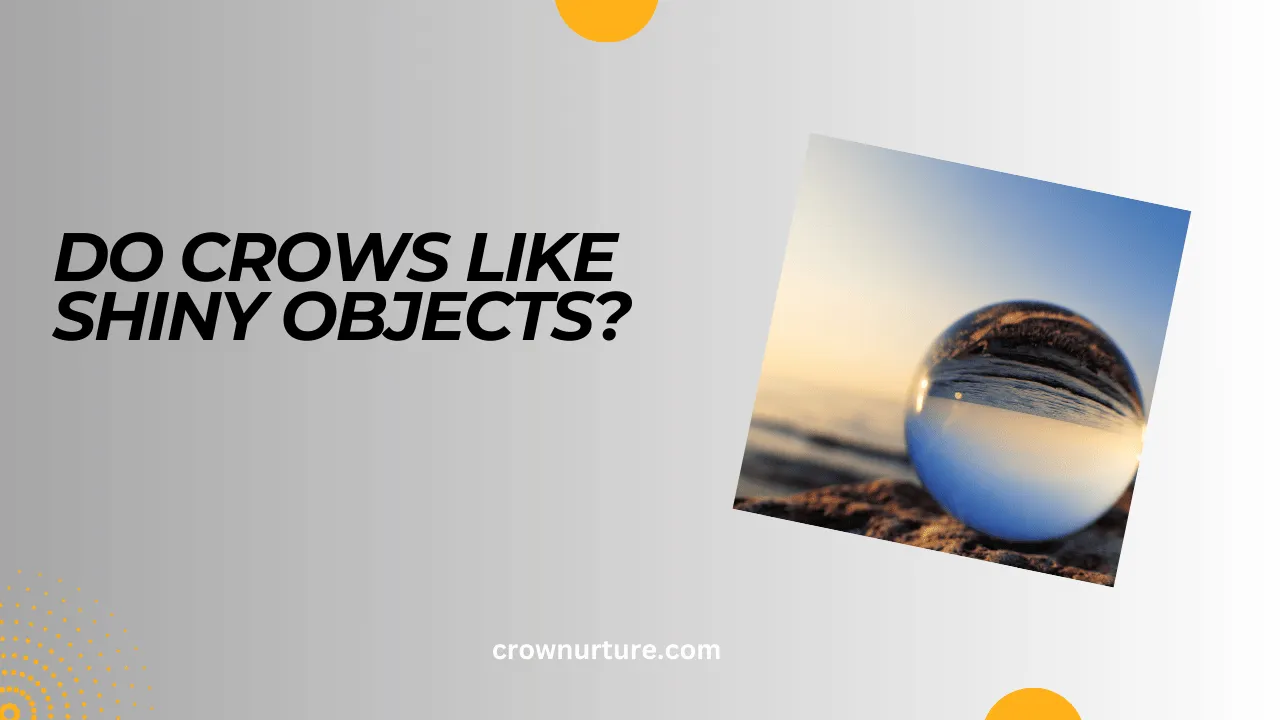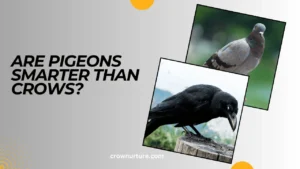Crows have long fascinated people with their intelligence and mysterious behavior. One of the most intriguing aspects of these birds is their supposed obsession with shiny objects.
From folklore to urban myths, crows have been portrayed as mischievous thieves with a knack for collecting reflective treasures. But is there truth behind this fascination, or is it simply a product of human imagination?
Understanding why crows might be drawn to shiny objects can reveal deeper insights into their complex behavior, cognitive abilities, and even how they interact with their environment.
Their sharp intelligence and unique habits make them one of the most fascinating species of birds to study.
This article dives into the reasons behind this shiny object fascination, examining crow curiosity, sensory perception, and how human interaction influences their behavior. By the end, you’ll gain a new appreciation for these remarkable creatures and their intriguing quirks.

Contents
1. Crow Intelligence and Curiosity
Crows are among the smartest birds, with intelligence comparable to that of some primates. Their ability to solve problems, use tools, and adapt to complex environments is well-documented.
- Problem-Solving Skills: Studies have shown that crows can solve puzzles, including multi-step challenges to access food. This problem-solving ability often leads them to explore and interact with various objects, including shiny ones.
- Natural Curiosity: Crows are inherently curious creatures. They explore their surroundings by picking up and examining items, often focusing on unusual objects that catch their attention.
- Social Learning: Crows are social learners and can observe and imitate the behavior of other crows. If one crow shows interest in a shiny object, others may follow, reinforcing the behavior within the group.
2. Sensory Perception
Crows have exceptional vision, which plays a key role in their interaction with shiny objects. Their sensory perception makes them highly attuned to stimuli in their environment.
- Visual Acuity: Crows have sharp vision that allows them to spot shiny or reflective objects from a distance. This heightened visual ability helps them locate food, avoid predators, and explore their surroundings.
- Color Perception: Crows can perceive colors, which may enhance the appeal of certain shiny items. Objects that reflect light or have metallic hues can stand out, sparking their interest.
- Sensory Stimulation: Shiny objects might provide crows with sensory stimulation, similar to how humans are drawn to glittering or reflective items. This stimulation could be mentally enriching for them, encouraging exploration.

3. Potential Benefits of Shiny Objects
While the exact reasons behind crows’ interest in shiny objects are unclear, there are several possible explanations for this behavior.
- Food Association: Crows may associate shiny objects with potential food sources, especially if they’ve previously found food wrapped in reflective materials.
- Territorial Marking: Some researchers speculate that crows could use shiny objects to mark territory or establish dominance in a particular area.
- Play and Enrichment: Crows are playful birds, and shiny objects may serve as a source of entertainment. They may use these items for mental stimulation or simply because they enjoy interacting with intriguing materials.
4. Human Influence and Misconceptions
Human activities have contributed significantly to crows’ exposure to shiny objects, but not all beliefs about their behavior are accurate.
- Urban Environments: The presence of shiny litter, such as foil or bottle caps, in urban areas provides crows with more opportunities to encounter these objects.
- Folklore and Myths: The idea that crows steal shiny objects has been exaggerated in popular culture. While they may occasionally collect reflective items, this behavior is not as common as myths suggest.
- Ethical Considerations: Intentionally attracting crows with shiny objects can disrupt their natural behavior. Observing these birds without interfering ensures their habits remain as undisturbed as possible.
5. The Bigger Picture: Understanding Crow Behavior
Crows’ attraction to shiny objects is just one aspect of their complex behavior. Their intelligence and adaptability highlight their importance in ecosystems and their remarkable ability to coexist with humans.
- Role in Ecosystems: Crows are essential as scavengers, helping to clean up waste and control insect populations.
- Human Interaction: Understanding their behavior can foster coexistence between humans and crows, reducing conflicts while appreciating their unique traits.
- Future Research: Scientists continue to study crows to uncover the deeper reasons behind their behaviors, including their interaction with shiny objects.
Conclusion
Crows’ interest in shiny objects reflects their intelligence, curiosity, and ability to adapt to their surroundings. While the exact reasons for this behavior may vary, it likely stems from a combination of sensory attraction, playful exploration, and environmental influences.
By understanding this behavior, we can appreciate the fascinating world of crows and their role in our environment. Instead of viewing them as thieves, we can admire their adaptability and cleverness, which make them one of nature’s most remarkable birds.
Whether they’re collecting shiny trinkets or solving complex puzzles, crows continue to capture our curiosity and inspire further study.
FAQs
1. Why do crows steal shiny objects?
Crows may be drawn to shiny objects out of curiosity or because they associate them with food or entertainment.
2. Do all crows like shiny objects?
Not all crows are interested in shiny objects, and the behavior may vary depending on the individual bird and its environment.
3. How can I keep crows away from shiny objects in my yard?
You can deter crows by removing or securing shiny items, using reflective deterrents, or setting up scare devices to keep them away.
4. Is it bad to leave shiny objects out for crows?
While it may seem harmless, intentionally attracting crows with shiny objects can disrupt their natural behavior and lead to conflicts with humans.
5. Do crows use shiny objects for nests?
Some crows might use reflective materials in their nests, but this is not a universal behavior.
6. What else do crows collect?
Crows may collect a variety of objects, including sticks, bones, and other small items that catch their interest.








